Exploring ION – – Sheldon Refuge, NV
For my whole life, I’ve had an affinity for the desert. When I was young and living in southern California, the desert was the first region I always encountered when leaving the massed civilization of the LA region. The desert was also the closest “wild” place to go, whether the activity was to be shooting, camping, firing off amateur rockets, or just exploring.
After a lifetime of traveling to multiple countries and ecological regions, the desert still holds for me some of the deepest fascination and appeal of any terrain. Its empty vastness, its bare strength and humility, and (perhaps most of all) its incredible silence and serenity, will be a Siren call to me for all of my years to come.
On our last trip (you can read several posts about it starting HERE), we explored a piece of the western US that we’d not visited before. It’s the area surrounding the shared border of Idaho, Oregon, and Nevada. This remote space is sometimes known as the ION region for the states’ first letters. We loved what we saw, and when car trouble (Ralph’s engine) forced us home early, we vowed to return for a more thorough investigation. And here we are.
The sign below is the second-longest “no services” warning I’ve ever seen, the longest one being 236 miles for the first stretch of the Dempster Highway in northern Canada. Although not quite as remote as the Dempster, highway 140 (westbound from highway 95) travels through some pretty lonesome territory. Out in these far-flung places, we carry spare gas, extra food and water, and a satellite InReach communicator – – just in case.
Having spent our first couple of days away from home in civilized comfort (an RV park in Minden, visiting friends), this was really our first night out in the boondocks – – our all-time favorite way to travel. No people, no structures, no power, lights, water, or facilities. Just us, Howie and Ralph, the terrain and the skies. We picked an empty little road that wandered off to a small pond, and parked for the night. The scale of things is obvious from just a short walk down the road.
The day was warm, mid-80’s even at 5000 feet elevation in this high desert. But sure enough, as the sun sank below the hills we were grabbing our sweaters against the quick chill of the evening. Darkening skies brought the coyotes to full song. It’s amazing how many different howls and yips they have, quite a diverse language really. They stopped, as usual, when real darkness settled. But later, when I was playing guitar outside, they started up again with some half-hearted hooting – – maybe just to reinforce their territorial claim against this strange intruder with the weird musical bark.
We stared up at the Milky Way, brightly banded across our black moonless sky, and marveled (as usual) at our tiny-ness in this Universe.
Next day, we drove down 140 a little way to the Sheldon Wildlife Refuge. Initially a Pronghorn Antelope refuge, its scope was widened and it was renamed. Today, it’s a bit more than 900 square miles of widely varied terrain. It includes hundreds of miles of skinny dirt roads, many springs and seeps, and more than a few designated camping sites. Plus the usual opportunistic “dispersed camping”, our favorite, where you just pull off the road and settle in.
But our first “base camp” stay was to be a designated campground at Virgin Valley; it even had pit toilets. It’s a free BLM camp on the eastern reach of the areas we wanted to explore, and it was an easy two miles of graded dirt to take Howie there. There were a few widely separated campers when we arrived. One camper, familiar with the region, told us there was not much in dispersed camping further down the road (he was mistaken), so we picked a spot and set up Howie in the very nondescript camp. There was also a central hot spring with a nice rocky-bottomed pool, and the place looked like a decent base of operations for a few days.
Indoor area with hot-spring plumbing. The spring-fed shower heads run 24/7.
But the hot spring could wait. With highway 140 the only paved road until I-80 (100 miles south), we were ready to do some exploring.
We took off toward the much-ballyhooed Royal Peacock Opal mine, knowing absolutely nothing about opals. It turns out that this mine is well-known to rock-hounds, who pay up to $190 a day to dig opals out of the surrounding cliffs. That price was a bit steep for taking a few pictures, so we kept on going, driving down the long valley below our campground.
Another mine, which was closed, had an access road where we could see the diggings. Nothing spectacular in any way, just a typical mineworks with roads scratched into the landscape, and piles of tailings here and there.
Being this far north, the desert is a bit more “damp” than what we are used to in the Mojave, Arizona, or even more southern portions of Nevada. And in this area in particular, there are hundreds of springs and seeps where underground water surfaces and greens up the place. From a distance, you can only get an occasional hint of the water presence.
But getting closer to individual springs, the desert comes to life in striking fashion.
With all the water spotted about, people ran cattle on this public-land desert for more than 100 years. But with the advent of the Refuge, grazing leases were non-renewed, and much of the cattle ranching ceased or re-located. In fact, the Peacock Mine was previously a cattle ranch; here’s an old aerial photo of it.
Of the many “wet spots” we were delighted to see, one of them was exciting in a different way, because it was fully across Ralph’s path. I don’t know exactly how the road flooded (especially so late in the season), but there was a full-blown pond drowning about 80 yards of our route.
In 4WD, I snuck the front end into the water, ‘feeling’ for softness, mud, ruts, logs, holes, anything that would get us stuck with nothing and nobody around to help. (Stuck in the mud in the desert – – how ignominious!)
The first 20 feet felt solid, and just to be sure, I put Ralph in reverse and jammed the throttle to try to spin the wheels. Still solid. Now, forward again, testing for the depth. Ralph can tolerate about 18″ of water, maybe 24″ for very short runs before it floods in under the doors and soaks the carpets. We crept forward, with the front end slowly getting deeper and deeper. Just as I was thinking about retreat, the invisible bottom leveled off, with the water depth holding at maybe 12-15″ or so. Another 50 feet and we started to climb out, and then we were on dry land again. Not a white-knuckle experience, but not exactly happy-go-lucky either.
Funny thing, when we came back down that road, we entered the water pond ford/crossing with easy minds and higher confidence – – which was NOT justified. Apparently, we had roiled the bottom with our previous passage, pushing gravel out of the way and leaving softer stuff underneath. Ralph sank at least 3-6″ deeper on one side than the first time through. We are NOT likely to give that one a third try.
Later in the evening, hanging around camp, we watched the visiting dogs trying to figure out the local jackrabbits. One of the rabbits saw a dog and went into “invisible” mode. See the odd rock in the photo below? It’s a jack with his ears laid back and tail tucked down. The dog coursed around, back and forth. When the jack jumped up and ran, it did so between the bushes and the dog never saw it. When the dog wandered past where the jack was hunkered down, he sniffed the resting spot, looked around, sniffed again. Score: Jackrabbit 1, Dog 0.
The next morning promised a slightly cooler day. Winds had picked up and were helping stir up the desert dust, but not too bad. We headed out westward toward a promising map feature, Big Springs Reservoir. There looked to be an easy access road to a BLM camp and a big (by desert standards) lake back in the hills.
Well, the access road was great, and the camp was vacant, and the lake was – – – dry. Bone dry, likely for many months. The vegetation covered what was once a mile-and-a-half square of blue water, now drought-sucked into oblivion.
It was a curious feeling, sitting there in the empty, sere space where fishermen used to congregate. There was no sound but the wind, no feeling but the dull ache of the punished, baked surface of the long-gone water. We left with a keener sense of the desert’s loneliness, and drove further west into the Refuge.
LOTS more exploring to be done, but we got a chance at some Internet (went 60 miles west to Adel for gas). So I’ll catch up on the rest of our time in the Refuge (antelope, weather, cold temps 18F !!!) in the next post.
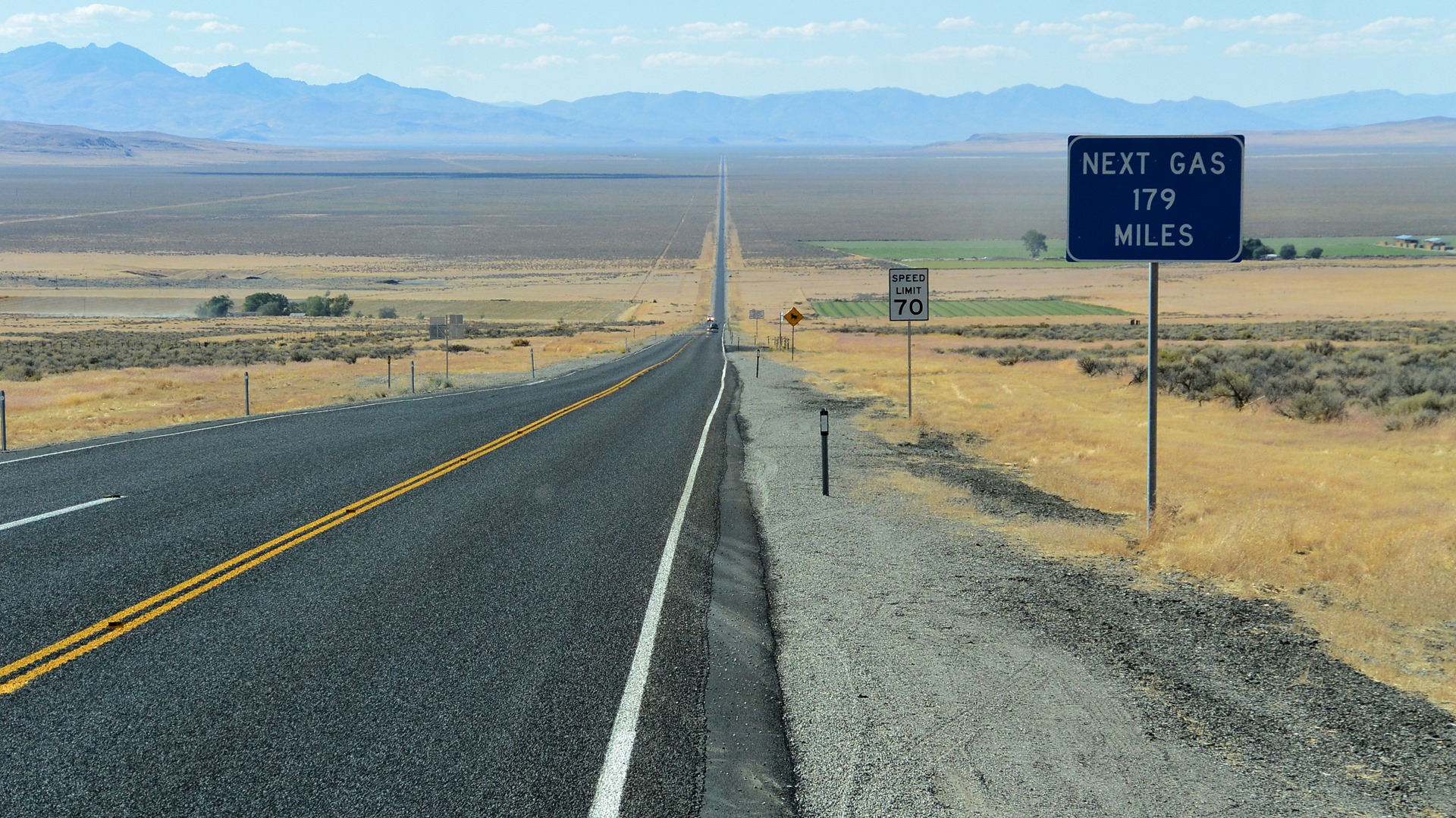
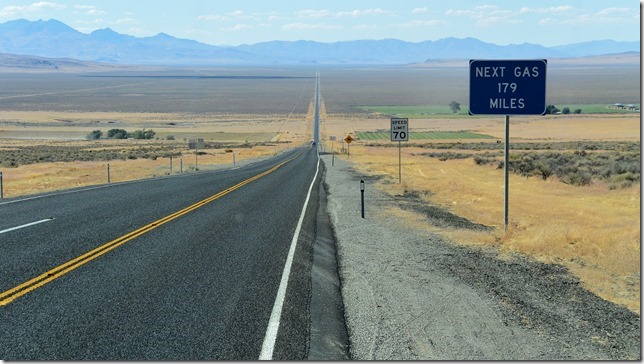
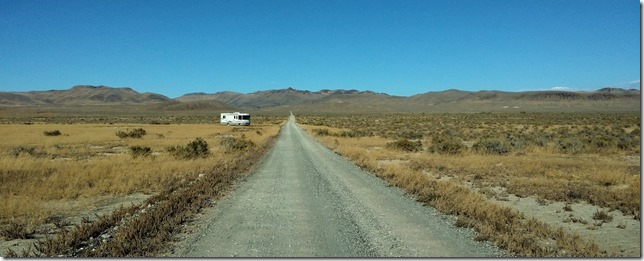
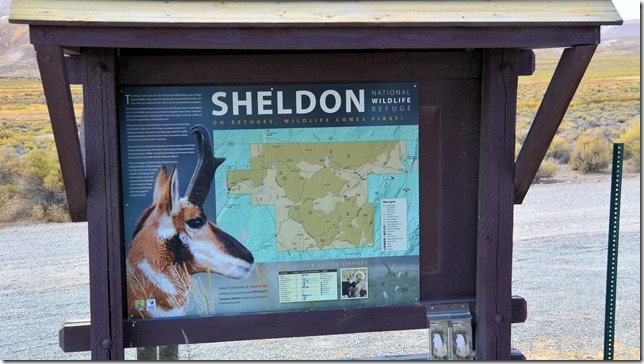
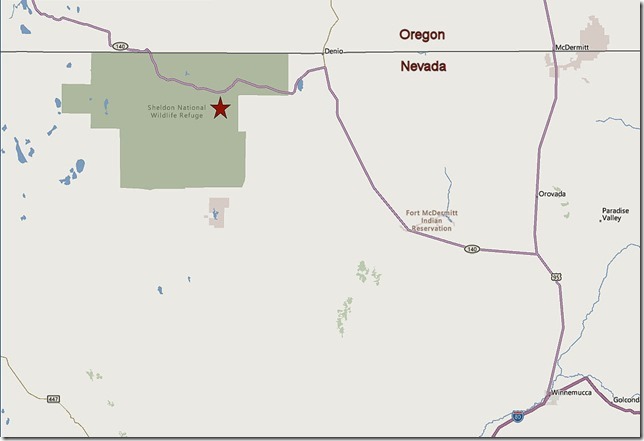
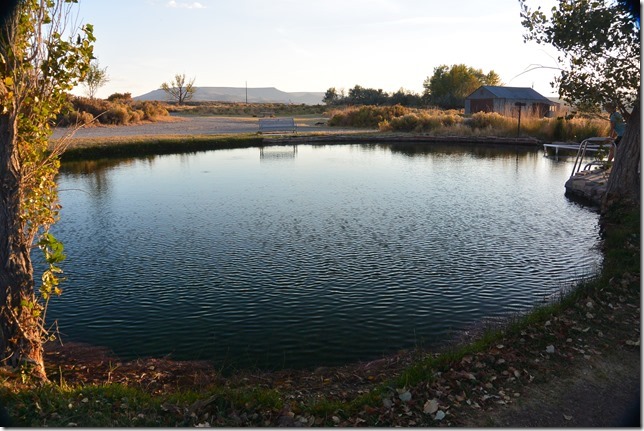
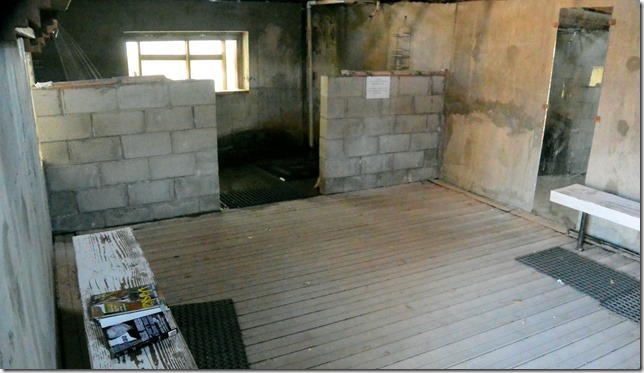
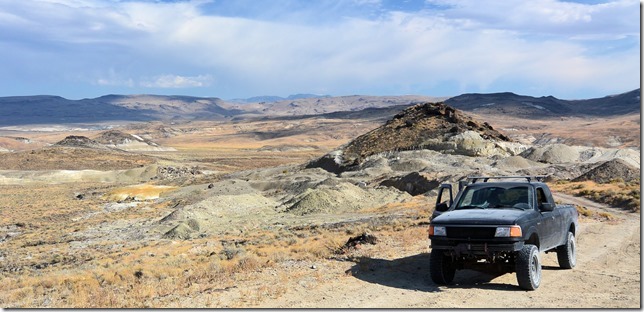
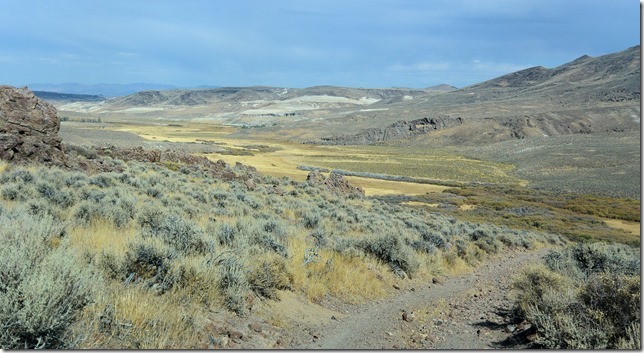
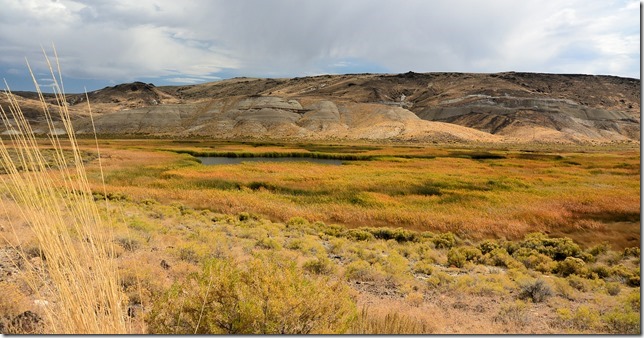
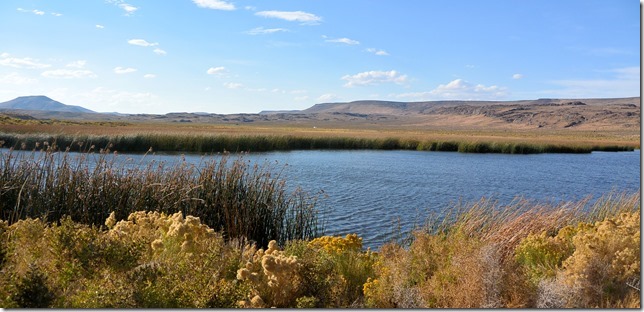
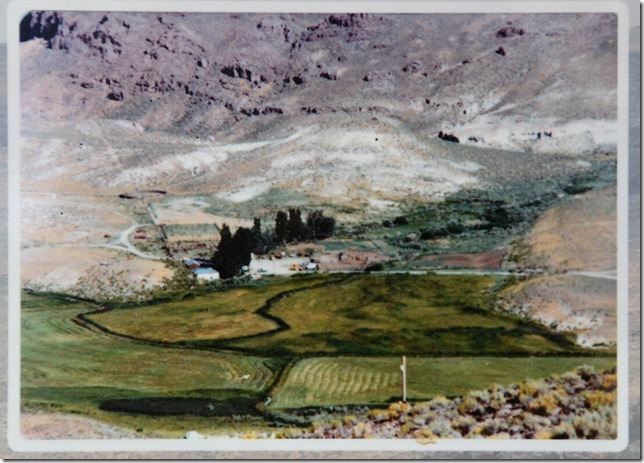
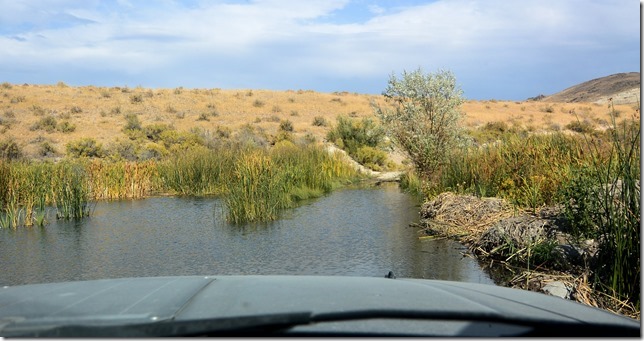
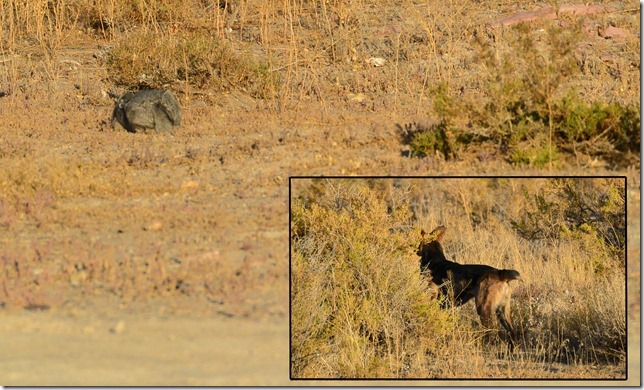
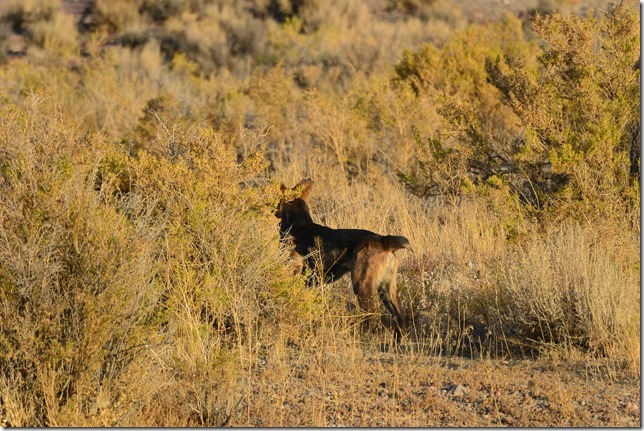
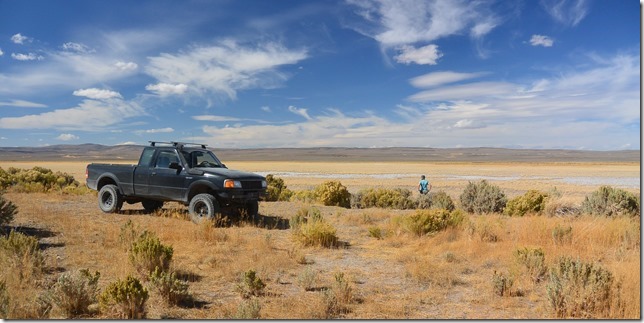
Great stuff!
harleyhawk43.wordpress.com
I must say it looks like you’re having a great time Greg.
Myron, I guess it shows, huh?
:o)